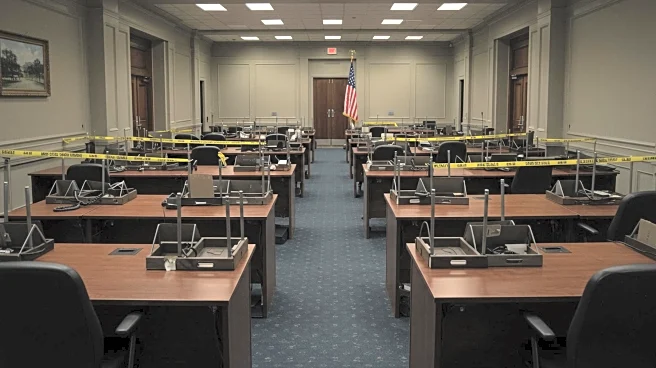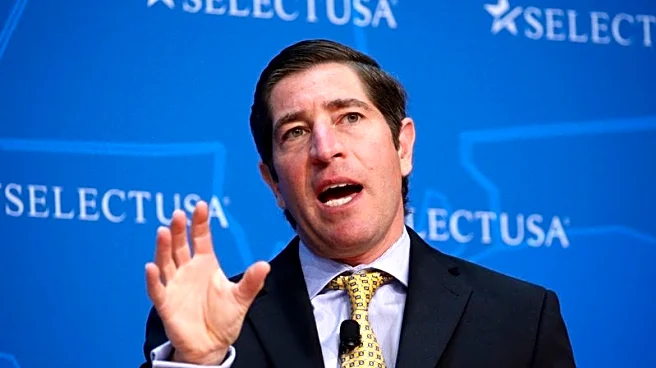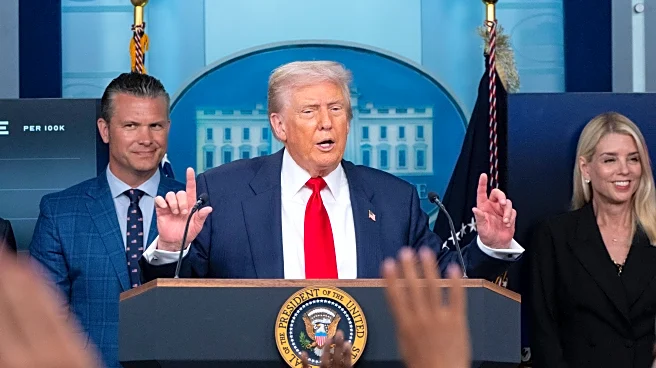What's Happening?
The Trump administration has announced plans to reduce the federal workforce by approximately 300,000 employees this year, representing a 12.5% decrease since January. Scott Kupor, the administration's new human resources chief, stated that 80% of these employees are expected to leave voluntarily. This initiative is part of President Trump's broader campaign to streamline government operations and improve efficiency. The administration is relying on persuasion to gain support from cabinet secretaries for these downsizing efforts, marking a shift from previous directives that instructed agencies to dismiss new employees. Agencies are preparing to submit further cut proposals to align with upcoming budget requests to Congress.
Why It's Important?
This significant reduction in the federal workforce could have wide-ranging implications for government operations and services. The move is likely to impact various sectors, including public policy and administration, as agencies adjust to reduced staffing levels. The initiative may lead to increased scrutiny from stakeholders concerned about the potential disruption to government services and the disproportionate impact on certain demographics, such as Black women, who may face career disruptions. The administration's focus on efficiency could result in changes to how federal agencies operate, potentially affecting public access to services and the overall effectiveness of government programs.
What's Next?
As the administration prepares the next budget request, agencies will propose further cuts, which could lead to additional workforce reductions. The Office of Personnel Management (OPM) plans to release specific agency statistics in the future, providing more clarity on the impact of these cuts. Stakeholders, including political leaders and civil society groups, may react to these developments, potentially influencing future policy decisions. The administration's approach to workforce reduction may also prompt discussions on the long-term sustainability of government operations and the need for strategic planning to mitigate potential negative effects.













